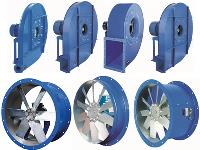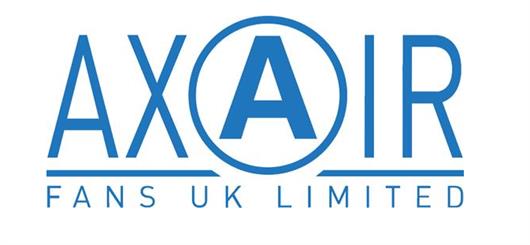 Add My Company
Add My Company

Zone one ATEX fans suitable for gas environments, are available from Axair's wide range of industrial fans designed and constructed for use in potentially explosive atmospheres. This article covers some of the protection requirements that ensure a fan is suitable for zone one, category 2 applications. In zone one equipment, additional measures are taken to provide a high level of protection. Motors characterised as “Increased Safety” Ex eb for example, are used on industrial explosion proof fans for example.
These zone one ATEX fans marked as Ex h, are designed and manufactured with components and design characteristics which reliably prevent ignition sources being generated internally, such as static discharges, unacceptably high temperatures and, sparks and arcs, both on the internal and external parts of the motor.
What is meant by ATEX Gas Zone One?
When we talk about zones, we mean the environment that the equipment will be placed in. This could be the external air, or the internal carried air if the industrial fan is to be used that way. The zone is classified externally, by specialist ATEX consultants who undertake a hazardous area survey to determine the classification based on the frequency with which the potentially explosive atmosphere may exist, along with the capability of the gas or dust to create an explosion. Zone one simply refers to areas that have an incidental presence of explosive atmosphere during normal operation. In terms of possible zones in ATEX hazardous area classifications, zone 0 represents the highest risk, zone 1 a potential risk and zone 2 a rare/abnormal risk. Each zone requires specific equipment protection.
Equipment Protection Level (EPL)?
As mentioned above, each classified zone requires a specific equipment protection. We refer to this as the EPL. In zone one ATEX applications, the equipment protection level required is “b”. Our zone one gas fans offer protection to Gb level. This means that the equipment remains safe in normal operation or when a single fault may occur in normal use. The equipment protection level is the last part you see on ATEX equipment labelling. This indicates one of three standard protection levels that are based on the risk of the equipment being a source of ignition in a hazardous area.
In ATEX coding, G stands for gas and D stands for Dust.
• Ga, Da – very high protection; the equipment remains safe in normal operation, even in rare fault situations (two faults at once)
• Gb, Db– high protection; the equipment remains safe in normal operation (single fault)
• Gc, Dc – enhanced protection; the equipment remains safe in normal operation, and may have extra protection to minimize ignition risk in fault situations (a fault may cause equipment to shut down)
AAVA – Ex eb IIC T4 Gb
For example the AAVA ATEX fan shows that the fan motor is “increased safety Ex eb” and has an EPL of Gb offering high protection so that the equipment remains safe in normal operations and even after one fault. Equipment Category II 2G Equipment intended for use in gas zone one will be classified in the ATEX category II 2G. A high level of protection is ensured. This equipment category II is not to be mixed up with gas groups that are identified as IIA, IIB and IIC which are classified in accordance with the ignitability of the gas/air mixture e.g Hydrogen. The example we showed is suitable for IIC gases so would be safe in a hydrogen application. Learn more about Hydrogen IIC here.
Should you Over Specify ATEX Fans?
In the event of determining the right equipment for your hazardous area, an ATEX code provides a well-defined minimum standard for the product that is required. For example, the code: Ex II 2G IIC T4 Essentially means European flameproof, surface industry II (not mining), Category 2 Gas (Zone 1), gas group IIC (hydrogen or acetylene gas), T4 – maximum surface temperature 135º°C If codes cannot be provided there is lingering uncertainty over what is actually required, what can legally be installed, and whether to have the end-user formally approve any resulting order placed by an intermediary. Even with the above code, if customers do wish to over specify their equipment and provide a higher level of protection they are free to do so, provided the absolute minimum protection satisfies the area classification code.
In addition to their coding, ATEX explosion proof fans must be selected with reasonably good knowledge of their flow/pressure operating point, the temperature and fume content of the air to be transported (especially whether hydrogen or acetylene fumes are present), whether they are being installed outdoors or indoors, the voltage of the anti-condensation heaters if specified, and which handing is required in the case of centrifugal fans. There are a lot more aspects to this but without being application specific, we won’t go into that detail here.
For more information on Zone One ATEX Fans for Category 2 Gas Environments talk to Axair Fans UK Ltd

